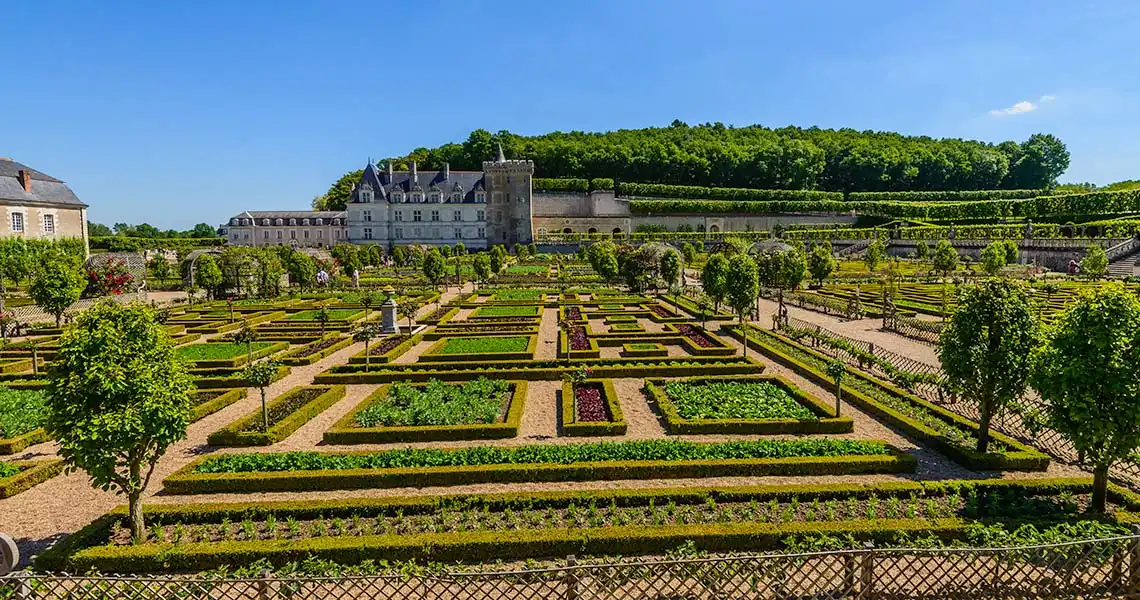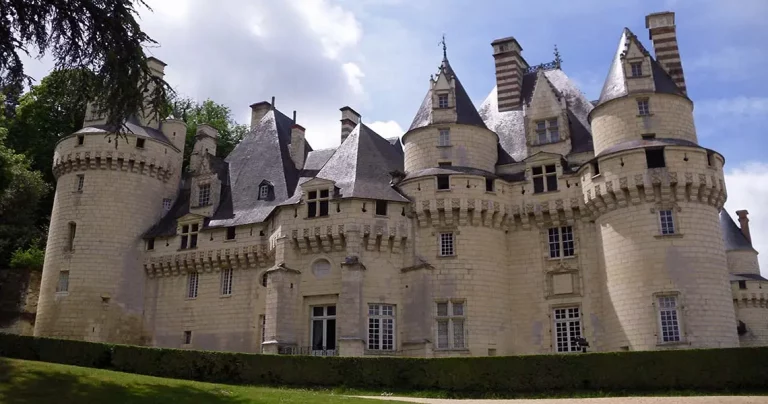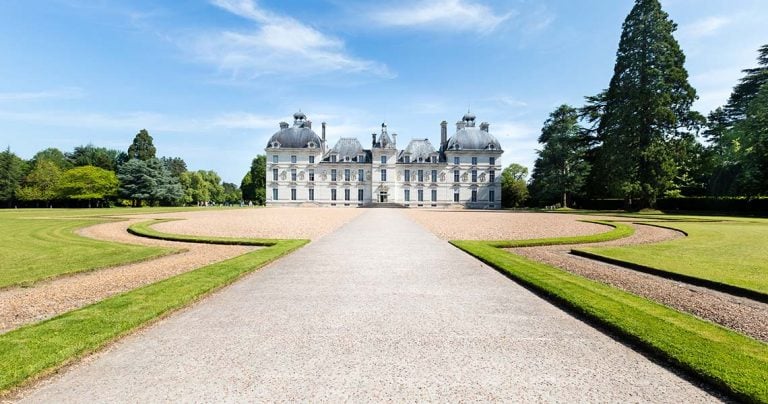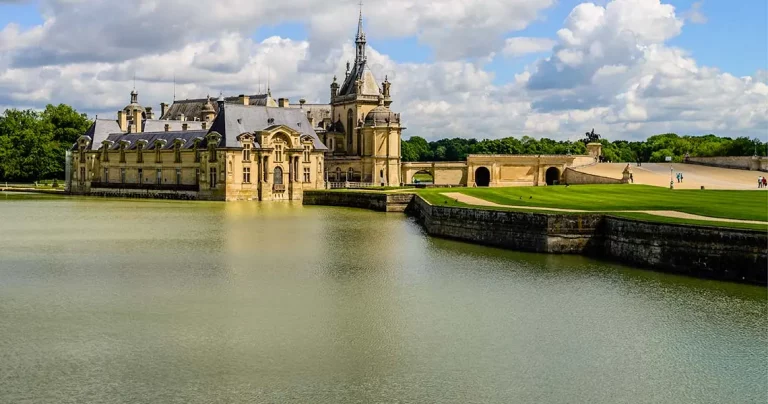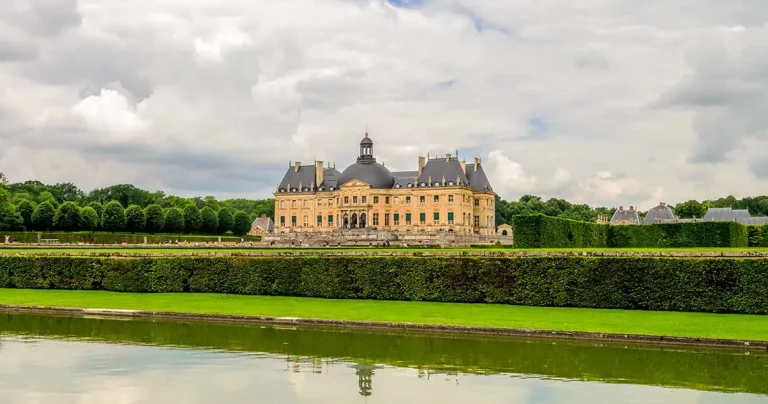Château de Villandry
Château de Villandry is the last of the great châteaux built during the Renaissance in the Loire Valley. Laid out in the shelter of a hillside on the Loire, it is simply a beautiful place of peace and harmony. Although it was never really marked by history, Villandry is a friendly, welcoming place where it is pleasant just to wander around.
Brief History
The origins of the land on which the Château de Villandry sits date back to the ancient Roman domain of Villa Andrik. The domain was renamed Colombiers in 1000 AD and remained so until 1639 when the name reverted to Villandry.
The surname Colombier was an occupational name for a keeper of doves or pigeons, derived from the Old French word colombe, which means dove. The current inhabitants are still referred to as Colombiens.
16th Century
The present Château did not take shape until the Renaissance when Jean Le Breton, Minister of Finance to François I, bought the property in 1532.
The Keep is the only Mediaeval reminder that Villandry was once a fortress. Possibly, Le Breton wanted to retain the Keep for its historical significance. In the Keep, King Philip Augustus of France and Henry II of England (Henry Plantagenet) signed the La Paix de Colombiers (The Peace of Colombiers) on July 4, 1189.
At Villandry, Jean Le Breton drew on his exceptional architectural experience acquired on many sites, including the Château de Chambord, which he supervised and directed on behalf of the Crown over many years.
Little documentation from the period exists of the extent of Le Breton’s design. An examination of the stonework gives some insight. In place of the fortress, he had three simple main structures built adjoining the Keep to form a horseshoe opening North onto the valley through which the Cher and the Loire flow.
Jean Le Breton preserved the medieval structure but modernised the Château by giving it a Renaissance look. The style seems to have been a precursor to Anet and Fontainebleau and later became known as the Henri IV style.
The first gardens were planted on the South side. The recent discovery of an 18th-century blueprint shows the existence of two terraces, one cultivated as a vegetable garden and the other as an ornamental garden.
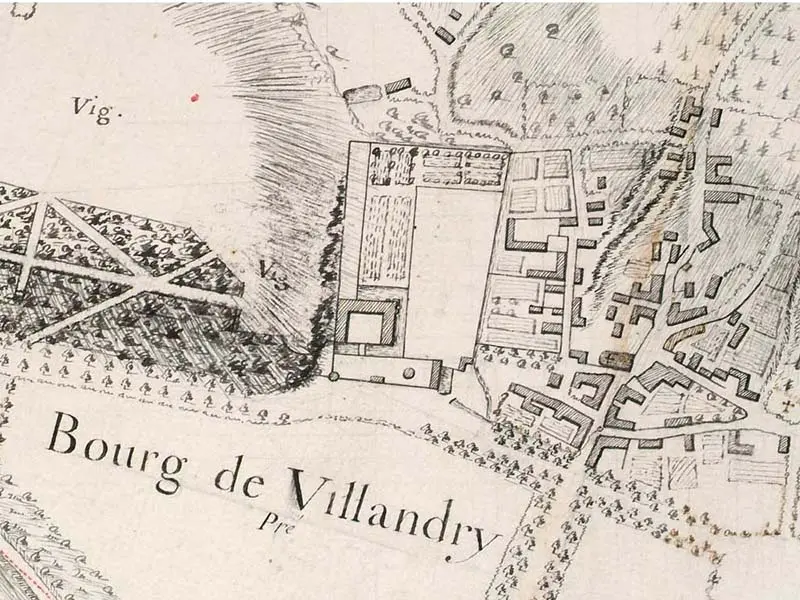
Le Breton made no changes to the surrounding area. There were still woods and vineyards at the top of the hill and farmed areas and dwellings at the bottom.
18th Century
Count Michel-Ange of Castellane was the King’s Ambassador to the Ottoman Porte (1741 to 1747) and Brigadier of the King’s Armies. Born into one of the oldest families of Provence, he acquired the Villandry estate in 1754. The Marquis of Castellane died at Villandry on September 26, 1782, and was buried in the seigneurial tomb in Villandry church.
Marquis de Castellane made substantial additions and changes to the building and furnished it in a comfortable 18th-century style. He enlarged the garden, gave it a more formal Versailles look, and added some Louis XV-style outbuildings.
19th Century
After the Revolution, Villandry had a succession of owners, including Jérôme Bonaparte, Napoleon I’s younger brother.
When the property fell into the hands of the Hainguerlot family, the gardens underwent a considerable change, morphing into a romantic English-style park.
This type of garden became fashionable in the late 19th century under the impulse of the Romantic Movement and required much less maintenance than a French-style garden. For these reasons, the Hainguerlot family presumably decided to change to a landscape of winding paths, curves and clusters of trees and shrubs.
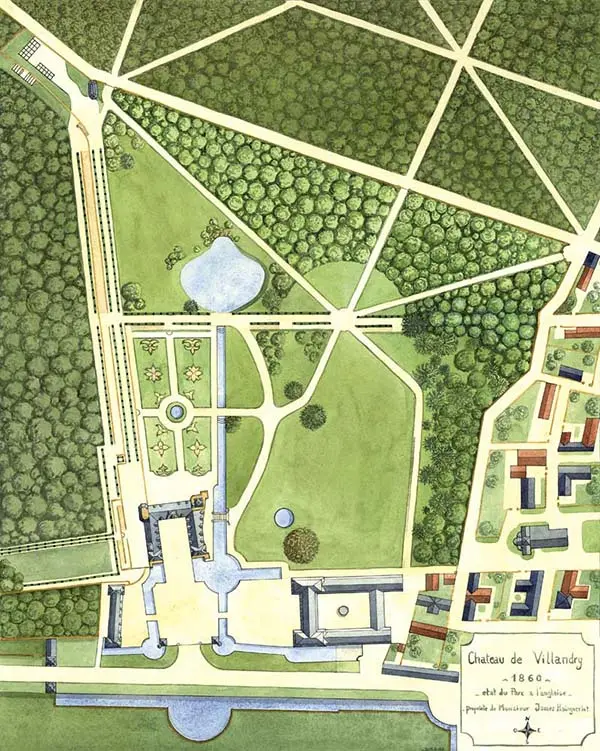
20th Century
Everything changed when Joachim Carvallo, of Spanish origin, and his American wife Ann Coleman bought the site in 1906. They gave up their career in science and devoted their fortune to restoring the Château. Villandry is still controlled by the Carvallo family today.
The current gardens of the Château de Villandry result from patient research carried out between 1908 and 1916 by Joachim Carvallo. Drawing on the Monasticon Gallicanum, a collection of 17th-century engravings of French Benedictine monasteries and the Plus Excellents Bâtiments de France, ancient engravings and texts of the architect Jacques Androuet du Cerceau, Carvallo was able to design a garden as close as possible to that of the French Renaissance style.
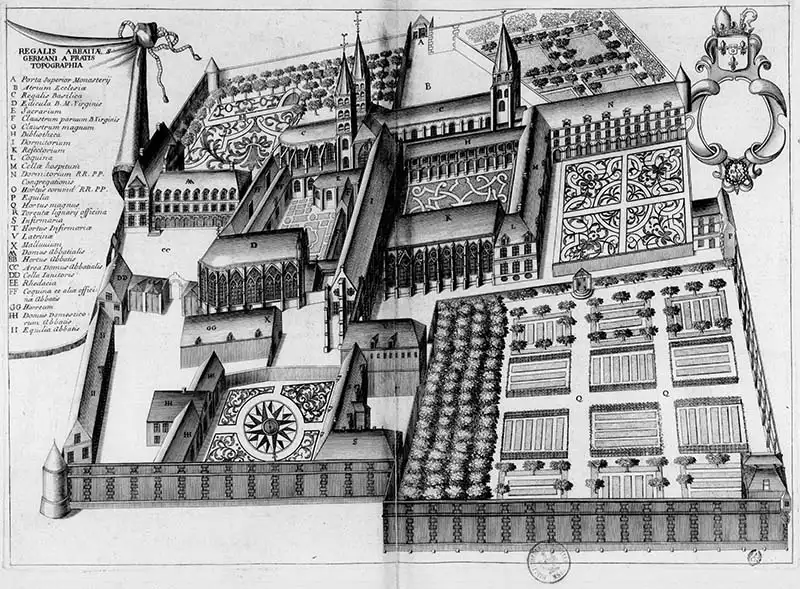
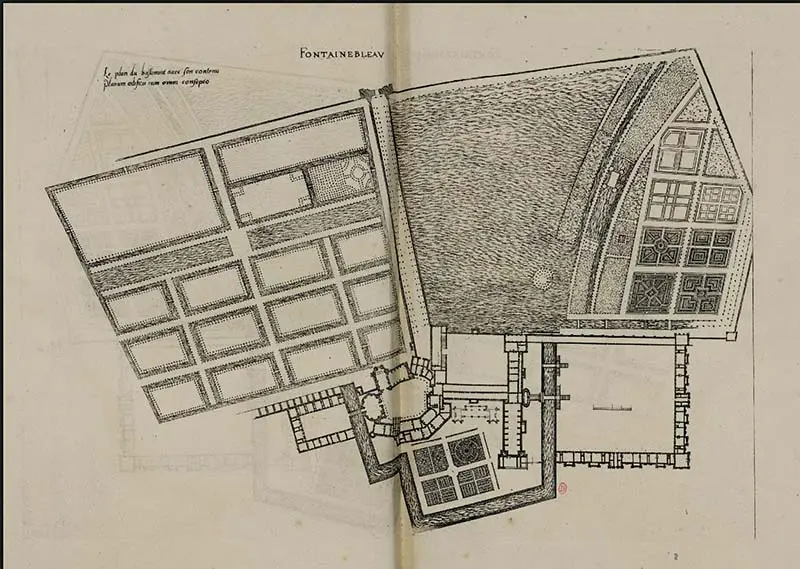
The Château
The Château often suffers in the shadow of its magnificent gardens, yet it is still worth visiting! The 18th century saw most of the 15 rooms on show redesigned with period furnishings.
A Château tour includes access to the mediaeval Keep, with a spectacular garden and the Loire Valley view.
Drawing Room and Study
The Drawing Room on the ground floor exudes a comfortable family atmosphere that visitors will appreciate when visiting the château interior.
Arranged around a grand piano that displays family portraits is 18th-century furniture covered with Touraine silk, still manufactured today.
The panelling on the wall completes the 18th-century decor and ensures that the room retains the heat.
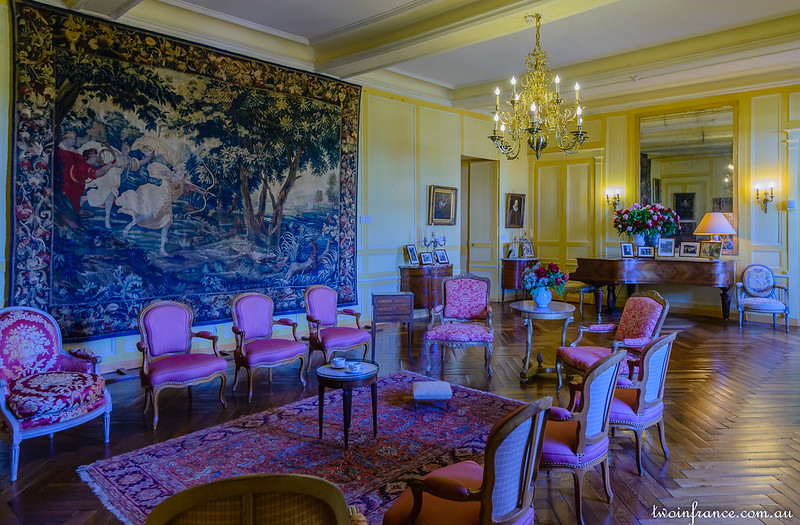
The Study is located on the ground floor of the Keep. In this room, Joachim Carvallo drew up the plans for cultivating the Kitchen Garden, among other things.
Dining Room
The Dining Room at the Château de Villandry boasts gleaming salmon pink panelling and a fountain, which remind us of the Provençal origins of the Marquis de Castellane, who owned the estate in the 18th century.
The marble floor is typical of a thoroughfare room, with parquet reserved for private areas.
The Dining Room at the Château de Villandry has been classed as a Historical Monument since 1934, as has the main staircase.

Art Gallery
Villandry also has a magnificent collection of mainly Spanish works dating back to the 17th century, considered the golden age of Spanish art.
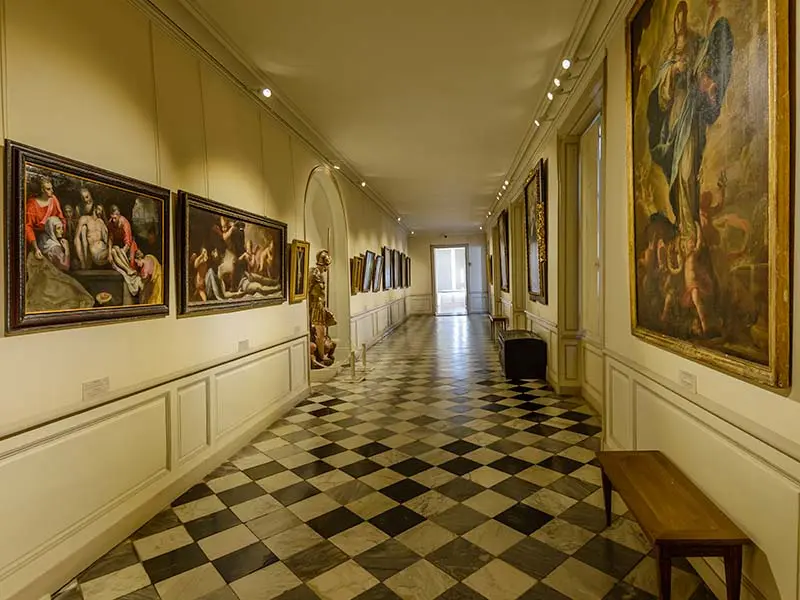
Kitchen
The Kitchen was a room used by serving staff, and, as such, there is a rustic aspect to it. There are terracotta floor tiles, an exposed stone wall and an imposing fireplace. Copper pots, pans, and a rotisserie are reminders of the purpose of this room — the vegetables on the solid oak table nod to Villandry’s Kitchen Garden.
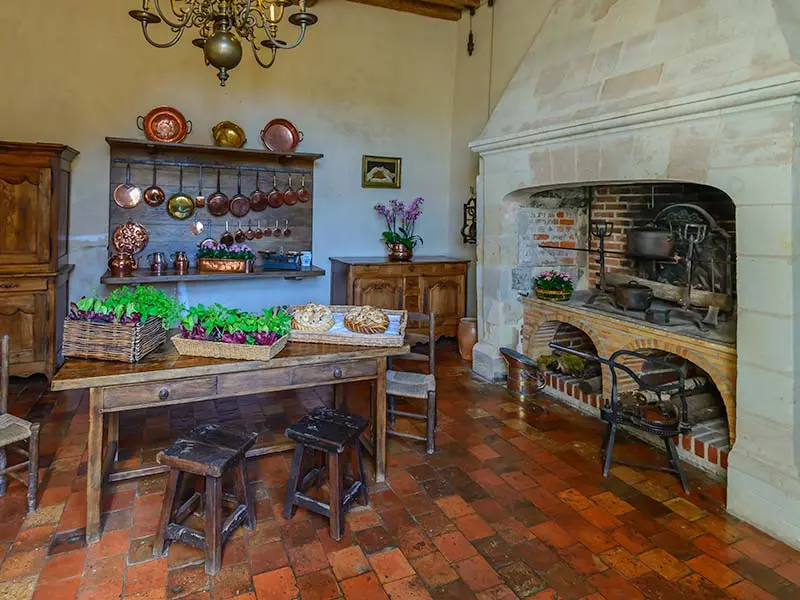
Gardens
Restoring the Château to its Renaissance style meant bringing back the Renaissance garden in the place of the English romantic park.
The gardens are so vast that it is easy to lose sight of what Joachim Carvallo was trying to achieve. A full appreciation is lost unless you first get an overview, possibly from above.
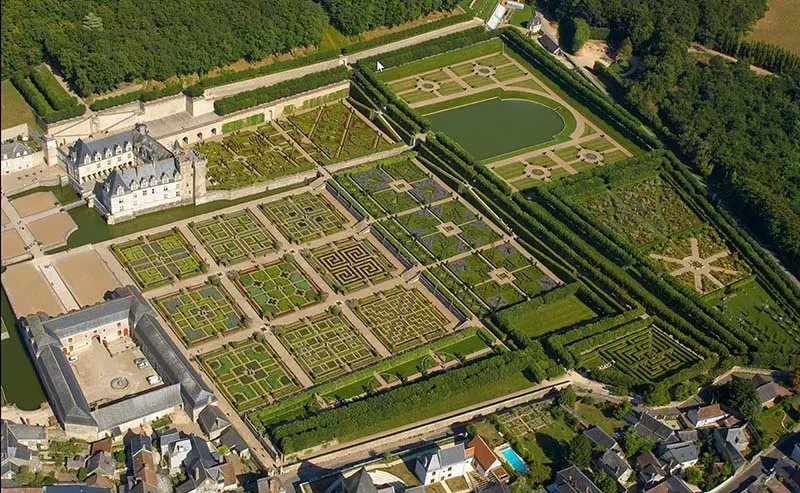
There are six gardens at Villandry, laid out in a series of terraces, each with its strong identity and aesthetic principles.
Kitchen Garden
At the lowest level is the decorative Kitchen Garden covering an area of almost one hectare.
In a purely Renaissance style, it consists of nine patches of the same size, each with a different geometric motif of vegetables and flowers. The vegetable patches of alternating colours give the impression of a multicoloured chessboard.
There are two planting schemes per year: the spring from March to June and the summer from July to October.
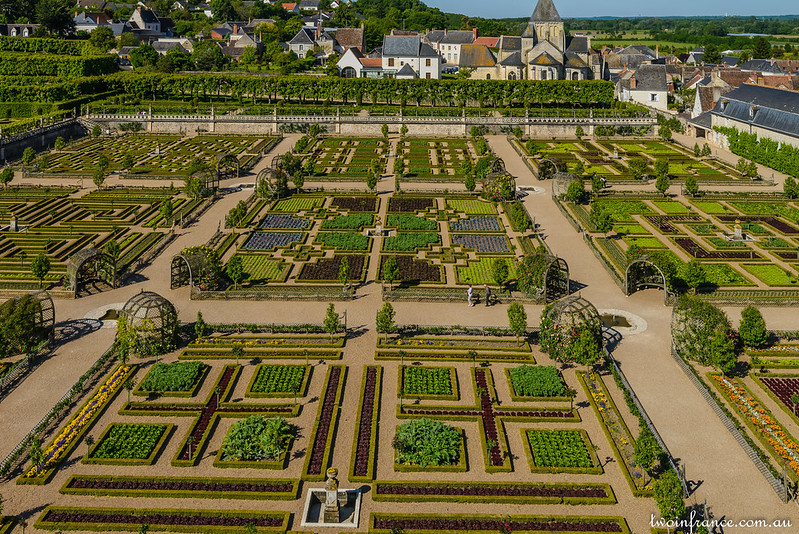
Ornamental Garden
Designed as an extension of the salons of the Chateau of Villandry, the Ornamental Garden covers the second terrace, between the Kitchen Garden and the Water Garden. A channel divides the Ornamental Garden into two greenery salons, the First Salon and the Second Salon.
The Renaissance design of this part of the gardens of Villandry is the result of a collaboration between the Sevillian artist Lozano and the painter and landscape architect Javier de Winthuysen for the First Salon, with Joachim Carvallo designing the Second Salon.
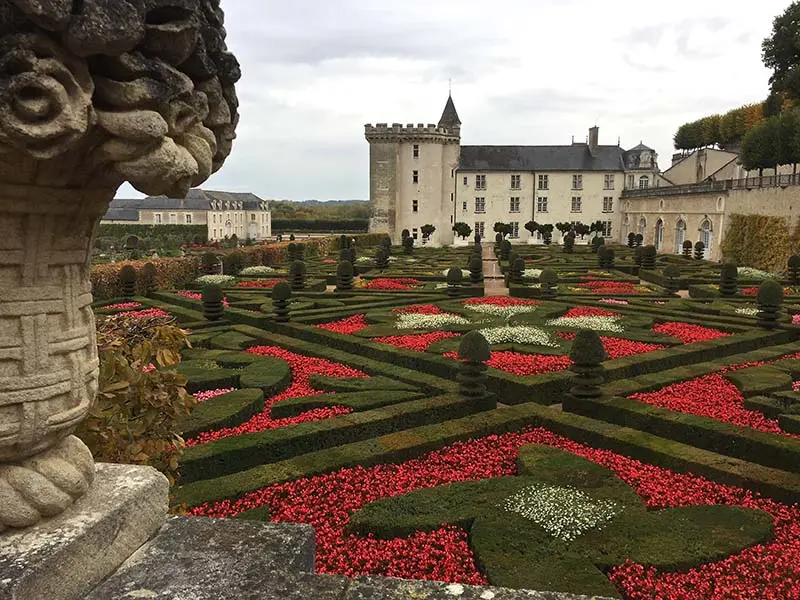
Water Garden
Above the Ornamental Garden, at the far south of the estate, is the Water Garden. This boulingrin, or sunken garden, bordered with grassy banks known as glacis, consists of an ornamental pond at the centre in the form of a Louis XV mirror, embellished with square parterres of lawn, a network of perpendicular avenues and four secondary ornamental ponds. The present-day Water Garden dates from the early 20th century.
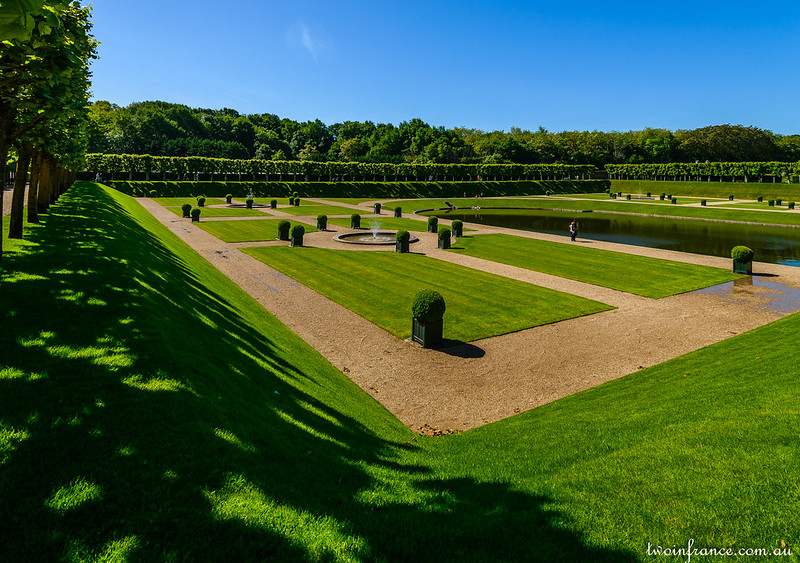
Sun Garden
Finally, you can enjoy the most recent garden, the Sun Garden, on the last level. It is a place to dream and get away from it all.
The Sun Garden forms a cloister of greenery made up of three chambers: The Children’s Chamber, the Sun Chamber, and the Cloud Chamber.
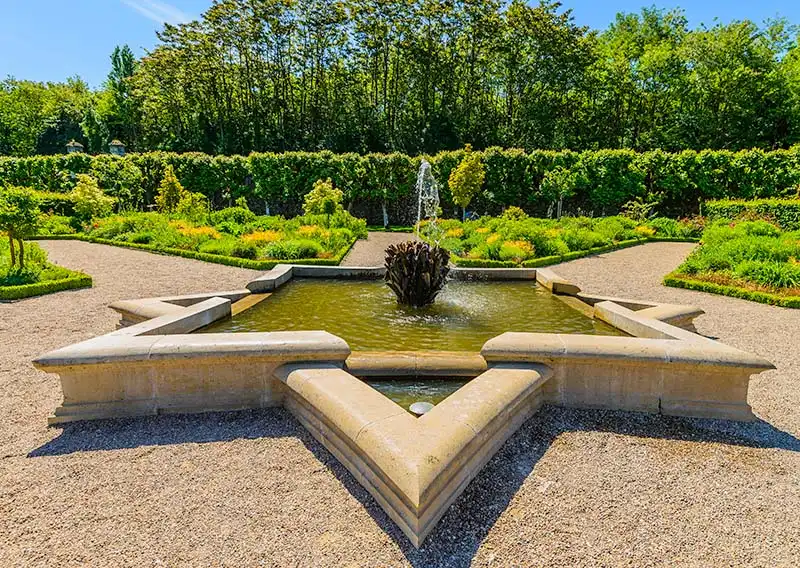
Herb Garden
Between the Kitchen Garden and the church, you can admire the Herb Garden, the traditional Garden of the Middle Ages. Like the Kitchen Garden, this garden supplies all the plants necessary for family life: medicinal plants, aromatic plants and herbs.
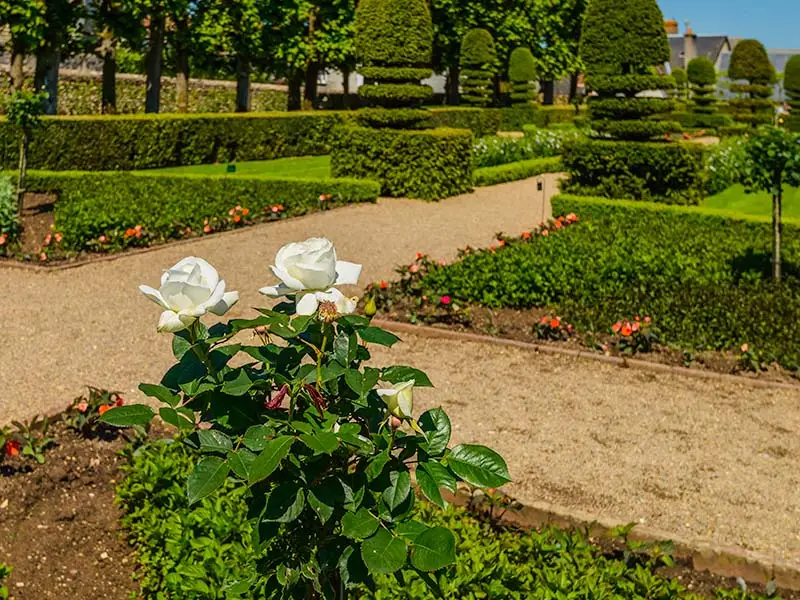
Maze
The maze symbolises man progressing serenely and smoothly towards God with its long, winding paths containing no dead ends. The aim is not to find an exit but to reach the centre.
All the gardens follow modern organic principles, with pesticides eliminated and replaced by parasitic nematodes or native predators. In addition, four beehives were installed on the south terraces of the gardens in Spring of 2010.
The amount of work to maintain the gardens alone is staggering:
- Fifty-two km of boxwood are pruned twice a year.
- Three hundred hours to prune the small box hedges in the kitchen gardens.
- 115,000 flower and vegetable plants are planted in the kitchen gardens or the garden rooms.
- 1,016 lime trees are pruned every winter and take four men two months to complete.
- Four hundred hours to prune the vines, rose bushes, pear and apple trees.
- One hundred ninety-six topiary yews are pruned twice a year.
Whether you like history, architecture, design, art or gardening, Villandry demands more respect than a fleeting visit.
You will need more than a day to do justice to the Château de Villandry. We stayed four nights at Le Petit Villandry overlooking the Château and can highly recommend it. There is also some good eating at L’Etape Gourmande and Auberge le Colombien.
Practical Information
3 Rue Principale, 37510 Villandry
+33 2 47 50 02 09
The gardens are open daily from 9 am throughout the year. The Chateau is open from 9am February 15 to November 16.
By car: A10 from Paris. By train: TGV to Tours
www.chateauvillandry.fr

